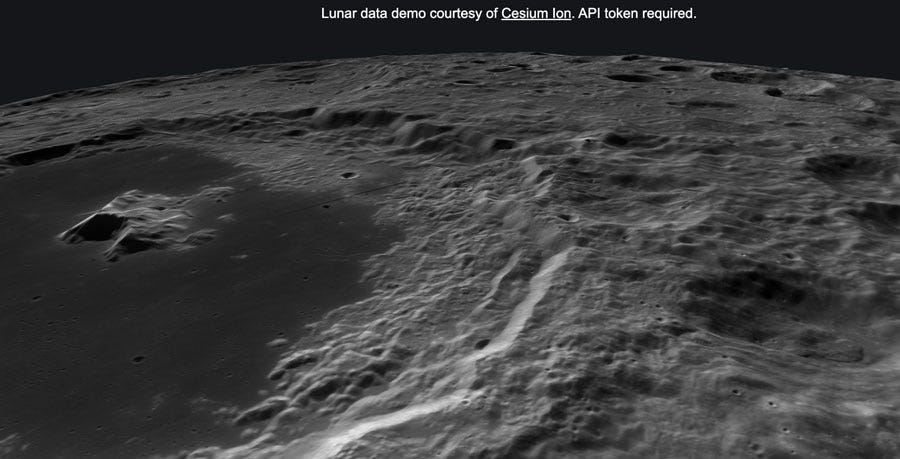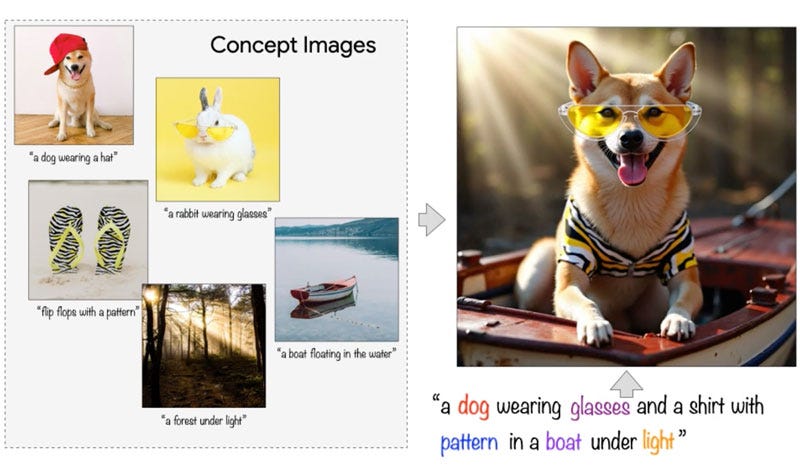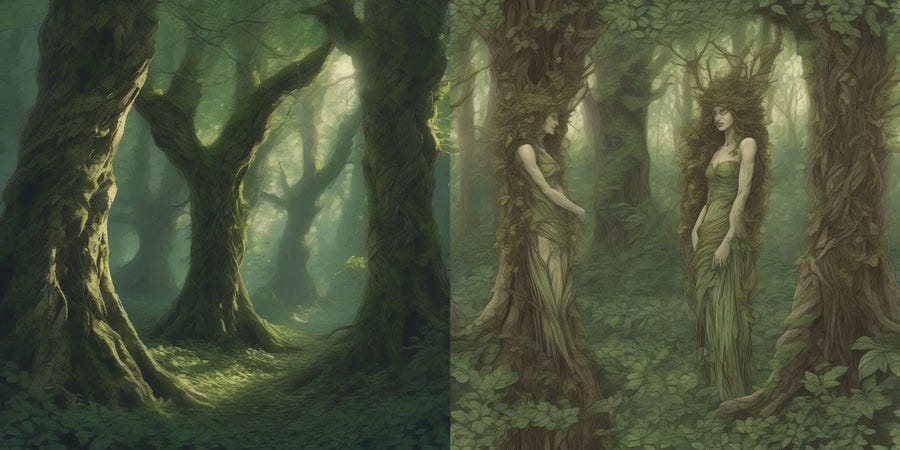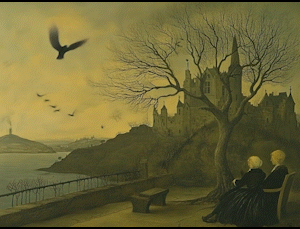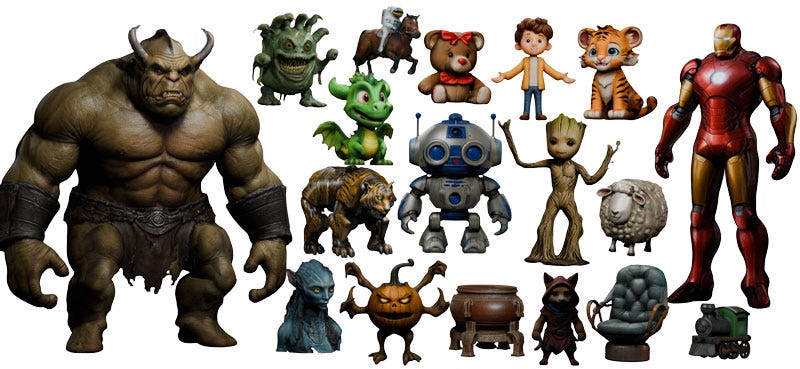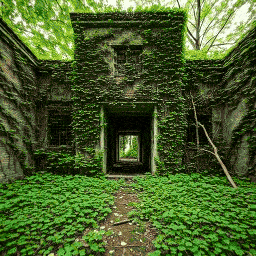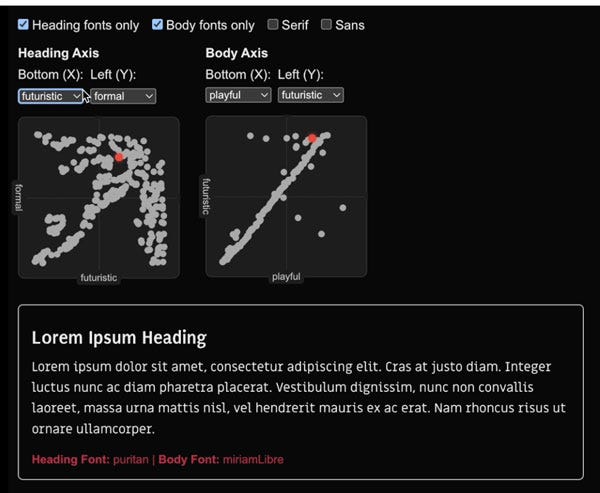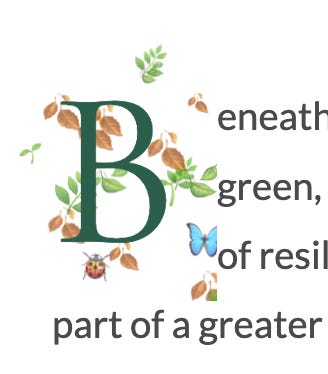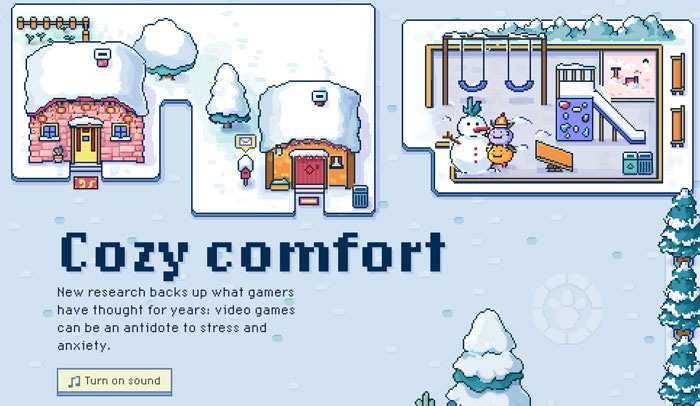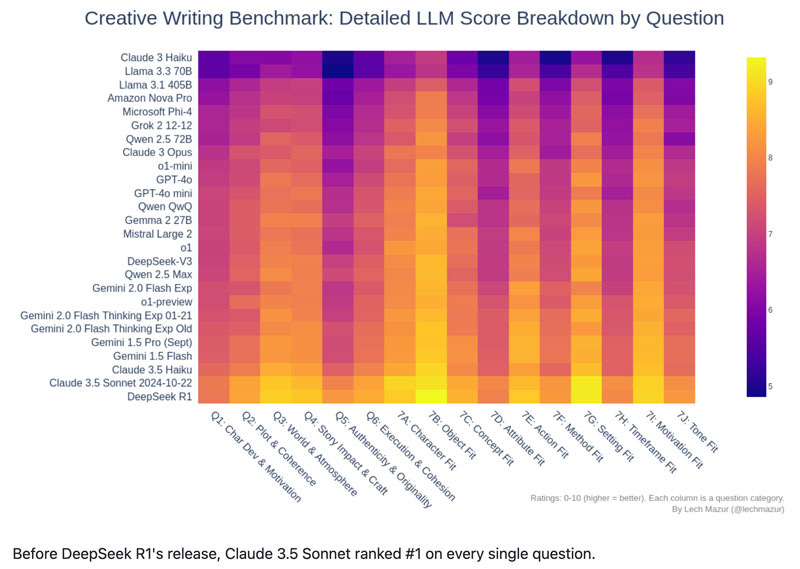TITAA #63: Moon Gathering
Three.js Tiles - Game Writing - Narrative Benchmark - Citations - 3D & Video

Table of Contents (links on the web page):
Intro article: Gathering Moon Things
AI Creativity (Images, Video/Animation, 3D)
Gathering Moon Things
Happy Lunar New Year! And now some moon-y things that have opened my tabs in the past month.
An interactive explorable about the moon by Bartosz Ciechanowski (shared by many link collectors, I may have seen it first in Matt Muir’s Web Curios). It is long, detailed, deep. Let’s hear it for educational passion projects.
Lidar scans of the moon: Explore an Incredibly Detailed Topographical Map of the Moon (via kottke and others). Their visualization show the actual imagery, in a zoomable and crater-filterable view. With a mouse, you can also rotate the view as I did here:
After seeing that, I spent a little while trying to see how to view this data in three.js for a web app. Welp, today I found this via happenstance (cuz searching did not help me). Someone at NASA already did it, with an amazing toolkit of three.js for 3D tiles (see more below in my Misc Web section):
Then a nice essay by Andrew Liptak whose SF newsletter (Transfer Orbit) I support: Destination: Luna, or “How scientists and science fiction writers discovered the Moon.” Let’s hear it for the French creatives!
Verne and Poe weren’t alone in writing about the Moon: authors like Edgar Fawcett, George Griffith, W. S. Lach-Szyrma, and H. G. Wells all wrote a range of lunar stories that saw people visiting and exploring the Moon’s surface. In 1902, director Georges Méliès released Le Voyage dans la Lune (A Trip to the Moon), a silent film based on Verne’s lunar novels, which would go on to inspire future filmmakers and writers in the years to follow.
While Verne drew on the scientific understanding of the universe of the day for his book, his novels had a notable, recursive influence on the scientific community: they inspired scientists who would later be the pioneers of rocket science from around the world, … who cited the author as an influence, and whose work would be foundational for the field of space exploration.

[Loosely related, re science fiction’s relevance: UK Ministry of Defence enlists sci-fi writers to prepare for dystopian futures The Guardian. Hello, Torment Nexus?]
Facing increased traffic, the Moon is on the World Monuments endangered sites watch list. “As a new era of space exploration dawns, international collaboration is required to protect the physical remnants of early Moon landings and preserve these enduring symbols of collective human achievement. With the 2025 World Monuments Watch, WMF seeks to increase awareness and protection of lunar heritage.”
The landing site, known as Tranquility Base, preserves some 106 assorted artifacts related to the event, including the landing module, scientific instruments, biological artifacts, and commemorative objects, as well as Neil Armstrong’s iconic boot print.
In other recent moon drama, “Asteroid triggers global defence plan amid chance of collision with Earth in 2032” (Guardian) — this asteroid is probably from the moon: “A space rock named 2024 PT5, resembling the size of a school bus, lingered near Earth for almost two months last year. The asteroid, which returned in January and passed safely at a distance of 1.1 million miles, is believed to have originated from the moon” (source). Like we need interstellar drama on top of earth drama… Meanwhile, Firefly’s Blue Ghost (private, commercial, on a mission for NASA) is on the way to the moon and you can watch news here.
Moon recs! Some of my favorite moon-related fiction things of recent years… TV: If you are watching Severance on Apple TV+ and you haven’t watched For All Mankind, you really should! So good. So much moon drama. On Netflix, I also enjoyed the Korean Silent Sea series.
In sf books, I have enjoyed: Artemis, by Andy Weir, the Lady Astronaut series by Mary Robinette Kowal (strong kinship with For All Mankind, frankly), Gunpowder Moon by David Pedriera. Evidently I’ve been saving up Jack McDevitt’s Moonfall, which is no doubt a great ride, and I haven’t yet read Ian McDonald’s Luna, either. (Why is it so hard for me to search my books by other than just title on Goodreads?!)
In game playing, I recommend Deliver Us the Moon. And I think with great fondness of all the little moons in Outer Wilds, although they are not ours and are more like the Little Prince’s. During the pandemic—when I went space mad—the VR space sims really got to me, including Universe Sandbox, which asks the urgent question, “What if 20 moons collided?”
I won’t go into folklore and occult, saving that for mid-month… but I have had some good moon poems in the this newsletter, and I recommend the one at the end of this one, which was chosen because it reminded me of an excellent recent re-read, Lud-in-the-Mist (see my recs below).
AI Creativity
U.S. Copyright Office says AI generated content can be copyrighted — if a human contributes to or edits it. As a symbolic representation of recognizing the kinds of work involved in creative use of tech, this is good news. My feelings about the value of copyright aside.
Image Gen
TokenVerse — this thing from Google is possibly the root of their experiment Whisk, which I liked and wrote about in December. Additionally, this one promises code!
Image gen with prompt iteration with “agentic review” is suddenly around a lot—a couple of these have come out recently. Try an “image tuning” vercel app to do image gen with staged review (by gpt-4o) and prompt iteration, and check a DSPy example with image outputs. Vercel app example first and second try:
In the vercel app, the prompt I put in:
A very detailed image of dryads hidden in the forest, hardly visible, their faces in the leaves and bark of the trees. Shadowy and mysterious atmosphere, we should be almost unsure if there is anything but forest. Green and sunny with shadows.
The image critic rated the result (on left above) poor, and revised the prompt to this, to get the one on the right, which the critic accepted.
A very detailed image of dryads subtly integrated into the forest, their faces seamlessly blending into the leaves and bark of the trees. The dryads should be elusive and almost indistinguishable from the forest, requiring a closer look to notice their presence. The scene should maintain a shadowy and mysterious atmosphere, with a play of green and sunny elements casting intricate shadows. Emphasize the ethereal quality of the forest while ensuring the dryads' faces are subtly yet discernibly part of the natural surroundings.
I don’t buy that all the stuff in the prompt is really needed, but I do buy the final result being a better pic, if not quite what I was hoping for.
Google Imagen 3 (available in Gemini app now, and in ImageFX), incidentally, produced these for that second prompt, which I don’t like as much as fast-sdxl!
Midjourney: we can now mix all styles and personalization. Here’s mine using the whole kitchen sink for a simple “ruined castle on a hill” from everything I personalized a month ago. I think they’re cool :)
Video and Animation
Seems like everyone (of the major players) has released an updated video model in the past 2 weeks. There’s even a stealth one in a Qwen model release (2.5 Max) if you are not in the EU (or have a VPN 😛).
Pika 2.1 has scene elements and turbo mode for faster gen, Luma Ray2, Hailuo Minimax “T2V-01-Director Model” offers text prompt with camera movements… If you don’t want to wait in the Hailuo queu (“there are 14293 people ahead of you,” I waited overnight), you can try some of these models on the lovely Replicate Playground and by their API.

FilmAgent: Automating Virtual Film Production via Multi-Agent Collaboration: “FilmAgent simulates key crew roles—directors, screenwriters, actors, and cinematographers, and integrates efficient human workflows within a sandbox environment. A team of agents collaborates through iterative feedback and revisions, thereby verifying intermediate scripts and reducing hallucinations.” They show Unity scenes. I don’t know if I want to watch a team of fake people make a movie unless it has a lot of drama in itself.
State of open video generation models in Diffusers — a HuggingFace post about what’s hard in video gen, support for these models, among other things.
fal-ai-community/video-starter-kit: Open-source project that demonstrates AI models for video producing on the browser: “A powerful starter kit for building AI-powered video applications. Built with Next.js, Remotion, and fal.ai, this toolkit simplifies the complexities of working with AI video models in the browser”, and using their API.
Animation of Art: See Layer Animate and FlexiClip, another svg animator, via DreamingTulpa’s aiart newsletter.
3D
GenCity - a Hugging Face Space by jbilcke-hf — Using the not-fantastic but pretty fast Stable Point Aware 3d (SPAR3D) to make 3d tiles for a kind of SimCity-like grid layout. Points for the app around the gen tool, despite a lot of funkiness in the generation output.
Blender add-on for Tencent/Hunyuan3D-2: High-Resolution 3D Assets Generation with Large Scale Hunyuan3D Diffusion Models. (A competitor or better to Trellis.) There’s a demo for Hunyuan 3D. One of my attempts:
CaPa: Carve-n-Paint Synthesis for Efficient 4K Textured Mesh Generation —this promises to create a fully detailed mesh in 30 seconds, but no code or demo yet. It does look much more detailed than the Hunyuan demo.
CubeDiff: Repurposing Diffusion-Based Image Models for Panorama Generation — this is a research project to turn a single image into a panorama view, but there is no code. The results look very nice though!
CityDreamer - Nerf-based animated city creation research project. The visuals look very basic to me, but we’ll see after code/demo.
Kiri Engine 3 out — a fast app for 3d splats. I need to try it.
3D arena leaderboard and voting — compare models. Guess the top 2.
Web Misc / Procgen / Three.js Etc
Pebble Watches Are Back! Google open sourced the OS. Yay, I was a big fan.
Wave Function Collapse: Overlapping Model (youtube) — Wave Function Collapse is an algorithm for procedural image generation. WFC tutorial part 2, from Dan Shiffman.
Song Gen from YuE - an open source competitor to Suno. Provide genre/style and lyrics and it generates a song.
⭐️ Viewing spatial tiles, a thing I’ve been looking for: NASA-AMMOS/3DTilesRendererJS: Renderer for 3D Tiles in Javascript using three.js and takram-design-engineering/three-geospatial: Geospatial Rendering in Three.js. (h/t Mr. Doob) Lots of fun examples especially in the NASA one, very exciting.
“Lines of Flight is a sequence of volumetric digital poems exploring the entanglements of wind, wing, and flying technique that constitute the airborne encounter.” “There are various ways of reading Lines of Flight, whether simply by tracing the visualized gliding tracks, as a form of asemic scripture, or by drawing out possible semantic associations between the constituent words of each generated poem.” By Richard Carter. Uses three.js.
Mosaic from Github Next. This is research UI work by X’s Silicon Jungle (James Addison), whose clever latent-exploration mini apps I have mentioned before. Design elements, such as fonts, color palettes, and imagery, are represented as high-dimensional vectors, enabling AI interpolation between concepts and aesthetics. “Since each design choice is parameterized, Mosaic can generate thousands of variations on the fly. Once you’ve chosen a point in the vector space, you can steer towards related themes without additional LLM calls. This lets you quickly lock in what you love and discard what you don’t.”
⭐️ Animated Drop Caps (codepen), holy shit I love this — sorry, not a gif but it moves:
GitHub - paper-design/shaders: Zero-dependency canvas shaders that can be installed from npm or designed in Paper. Meant for backgrounds or masking.
Games News
Reuters built a game-like article on Cozy Games. It’s a scrollytelling gameified article, very cute. And a good intro for you non-gamers, although you’re probably not reading this section.
Fractal Block World. Or, How I Learned to Stop Worrying and Love Video Games Again, by excellent game writer Frank Lantz. On rediscovering the whimsy of Minecraft.
Castle Game Engine - opensource, for building 2d and 3d worlds.
Yay But Also Oh No, A Map Game - Aftermath and also Geoguessr-inspired detective game Locator is about puzzles, perspective, and empathy on an alien planet in RPS. I’m super into this photography and diary based game because of the plot premise—lost archaeologist deduction mystery—while thinking I might be bad at it (I was bad at the 2D localizations in Inkle’s Highland Song).
You Are Carrying (@youarecarrying.bsky.social) a bot from Mark Sample - “Random locations from every Infocom game ever. Reply "i" or "inventory" to find out what you're carrying.”
⭐️ Notes from the Boundaries of Interactive Storytelling — Polaris workshop group report on interactive storytelling (Squirrel Eiserloh, Jurie Horneman, Pat Kemp, Emily Short), particularly focusing on the tension between player agency and authorial intent, balancing player freedom with still creating a cohesive story. Covers storylets, dynamic casting, reactive dialogue systems and some case studies, well worth a read.
A Video Game Writer’s Lament: ‘We Can Do Quite a Lot Better’ (NYT) - Inkle’s Jon Ingold taking shots at writing in games, including fan favorites. Evidently a discourse-causing polarizer. (When I tried to get an AI summary of this during an experiment with web summaries, it told me it was an obituary.)
“The game’s opening is 20 minutes of someone describing breathing,” he said, recounting the internal dialogue by an amnesiac detective who wakes up with a hangover.
FYI, this reminded me of a Frank Lantz piece, “Are Games Bad?” that critiques Hideo Kojima’s writing.
Narrative Research & Gen
lechmazur/writing: This benchmark tests how well LLMs incorporate a set of 10 mandatory story elements (characters, objects, core concepts, attributes, motivations, etc.) in a short creative story (h/t Jeremy Howard). Judging (by LLM agents) based on:
Character Development & Motivation
Plot Structure & Coherence
World & Atmosphere
Storytelling Impact & Craft
Authenticity & Originality
Execution & Cohesion
7A to 7J. Element fit for 10 required element: character, object, concept, attribute, action, method, setting, timeframe, motivation, tone.
This repo has a lot of interesting charts and explorations. Deepseek R1 in the lead by a hair over my BFF Claude. I have heard anecdotally from a couple people with creative writing tools that it’s a huge help. (Now let’s see how o3 works…)
Multi-Agent Systems with AutoGen — “Book Generator with Gemini 2.0.” I am not advocating for AI slop books—I’m interested in human-AI collaborations—just reporting the tools out there. A “collaborative story generation using Gemini 2.0. The system consists of two agents: a StoryGeneratorAgent that creates structured story content and a BookGeneratorAgent that handles image generation and PDF compilation. Features include structured JSON communication between agents, integration of non-openai models (Gemini 2.0), control flow routing using topics and messages and integration of tools (e.g. image generation, PDF generation).”
LatitudeGames/Wayfarer-12B · Hugging Face — a creative model from the AI Dungeon folks. “Wayfarer is an adventure role-play model specifically trained to give players a challenging and dangerous experience. We thought they would like it, but since releasing it on AI Dungeon, players have reacted even more positively than we expected.”
Game Factory — creating new games from video. No code yet, seems to add controls to video, based on learning from Minecraft videos. OTOH, I have a lot of “wtf lol” from these examples:
Structure, Agency, and Intent: Preliminary Data Collection | Semantic Scholar — dataset creation of role playing game interactions: “We discuss the first phase of a multi-year effort to construct a dataset based on an interactive narrative exercise between pairs of humans. One human took the role of the player in a hypertext-based game, while the other took the role of a game master controlling the non-player characters. Alongside gameplay logs, we collected users’ explanations for their own choices and for each other’s choices, and their ratings for the quality of story structure and personal agency.”
OpenCharacter: Training Customizable Role-Playing LLMs with Large-Scale Synthetic Personas. “Our best-performing model strengthens the original LLaMA-3 8B Instruct model and achieves performance comparable to GPT-4o models on role-playing dialogue. We release our synthetic characters and instruction-tuning dialogues to support public research.”
👉 I put some more academic links (including a new fiction data set) in this blog post, to try to save room here.
Data Science / NLP
Empirical Insights into Feature Geometry in Sparse Autoencoders — LessWrong — Hmm, there may be no geometric relationship, the way there is in Word2Vec. (I’m also seeing some other negging on SAEs as useful or not, e.g., in steering models.)
Explore, Curate and Vector Search Any Hugging Face Dataset with Nomic Atlas. Like, if you wanted some kinds of narrative text…
BM25S⚡ — on disk, no db needed, very fast search. “However, thanks to a novel sparse eager computation strategy, bm25s is able to achieve speeds comparable or exceeding ElasticSearch, all while eliminate the need for setting up web servers, installing & running Java, and relying on abstracted APIs.”
Sonar by Perplexity — API for search with grounding and reasoning (supporting Deepseek too).
Citations support from Claude API — so great. This means providing the text snippet that supports a claim by the model, so you can verify and avoid hallucinations more easily. It’s huge. (Link to code.)
Train 400x faster Static Embedding Models with Sentence Transformers — also some fast static embedding models are being released. Much easier to use these in production situations.
GitHub - MinishLab/semhash: Fast Semantic Text Deduplication.
GitHub - vinayak-mehta/ipychat: An AI extension for IPython that makes it work like Cursor
My blog post about interpolating between sentences with even tiny crappy embeddings, from a database of Gutenberg Books downloads.
Recs: Books, TV
My top book rec is the excellent classic fantasy Lud-in-the-Mist by Hope Mirrlees, which I reread with new eyes. It’s much more complex than I remembered, with a murder mystery and ghosts (the Silent People) and smuggling, as well as several kinds of (maybe) fairies from over the forbidden hills, plus a vanished/banished Duke that reminded me of Jonathan Strange and Mr. Norrell. Not easy to get into initially, but will pay off with fantastically wandering descriptions that land you, gradually, in horrors.
My top TV rec is to binge watch 7 seasons of Younger on Netflix, to try to escape news about current politics. Also think seriously about Severance, and the Night Agent is really fun too.
There’s a lot more detail in my books, tv, and game recs in the paid supporters separate newsletter.
A Poem: “Moon Gathering”
And they will gather by the well, its dark water a mirror to catch whatever stars slide by in the slow precession of the skies, the tilting dome of time, over all, a light mist like a scrim, and here and there some clouds that will open at the last and let the moon shine through; it will be at the wheel’s turning, when three zeros stand like paw-prints in the snow; it will be a crescent moon, and it will shine up from the dark water like a silver hook without a fish—until, as we lean closer, swimming up from the well, something dark but glowing, animate, like live coals— it is our own eyes staring up at us, as the moon sets its hook; and they, whose dim shapes are no more than what we will become, take up their long-handled dippers of brass, and one by one, they catch the moon in the cup-shaped bowls, and they raise its floating light to their lips, and with it, they drink back our eyes, burning with desire to see into the gullet of night: each one dips and drinks, and dips, and drinks, until there is only dark water, until there is only the dark.
I’m struggling with the news cycle, as well as the weather. I hope you are all doing better. How is it February? Did I survive January? I don’t even know. Time to go play a game (Citizen Sleeper 2 is out).
Best, Lynn (@arnicas on mostly bluesky, ex twitter, mastodon).






